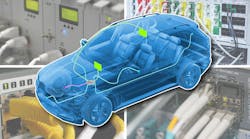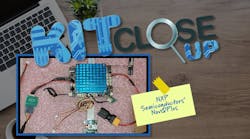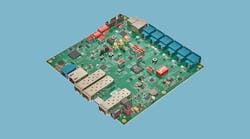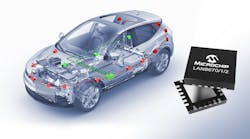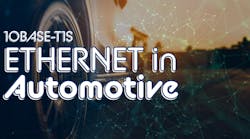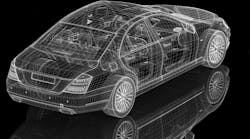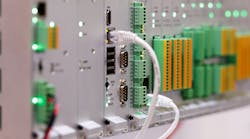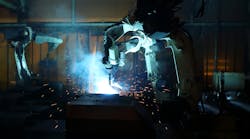Single-Pair Ethernet (SPE)
Ethernet is the wired networking technology of choice, but the RJ45 connectors with multiple wires leaves a bit to be desired when working in commercial, industrial, and rugged environments like automotive. Point-to-point (P2P) connections typically used two twisted pairs, one pair for transmitting and one pair for receiving. Additional pairs are often employed for faster transmission or providing power.
Single-pair Ethernet (SPE) puts everything on a single twisted-pair cable, including optional Power over Data Line (PoDL) support. Tradeoffs need to be accepted to allow a single pair to be used, but the flexibility achieved by reducing the number of wires is significant in many applications. It can also simplify overall design and improve reliability because of simpler connections.
This TechXchange brings together articles, videos, and podcasts related to SPE. We will be adding new content as it becomes available, so you can always find our the latest content about SPE.
Single-Pair Ethernet Details
There are a number of standards that relate to single-pair Ethernet (SPE) including support for multidrop and providing power.
The SPE standards build on the IEEE 802.3 Ethernet standards. Most implement point-to-point (P2P) connectivity but multidrop capabilities. Power over Data Line (PoDL) is covered by other standards.
SPE Standards
These articles delve into the standards and uses of single-pair Ethernet.
Single-Pair Ethernet Organizations
A number of organizations support or work with SPE standards. We've listed some of the more notable ones here. Let us know if we missed any.
- IEEE Standards
- Single Pair Ethernet System Alliance
- Ethenet-APL - Advanced Physical Llayer
- CC-Link Partner Association - industrial networks
Other Ethernet-related organizations include:
SPE in Action
Below are some examples of chips and systems that implement SPE support.
Automotive SPE
SPE adoption in the automotive space is increasing as high-speed networking becomes a requirement, especially as designers adopt software-defined-vehicle (SDV) architectures. Time-sensitive networking (TSN) support allows Ethernet to replace CAN where deterministic implementations are required.
Industrial SPE
Industrial automation has implemented standard Ethernet for a very long time. SPE adoption in this space continues to escalate as new standards and connectors come into play. SPE supports TSN, allowing for deterministic operation.
Companies with SPE Chips
Numerous companies employ single-pair Ethernet in their products, but the PHYs and microcontrollers are where things start. We include some of the companies here, though the list is a bit shorter. Let us know if we missed one.
Also check out lists like the Single-Pair Ethernet System Alliance member list and the CC-Link partner list.
We have product pages for some companies, but here are more SPE chips vendors you should know about:
More TechXchanges on Electronic Design
About the Author
William G. Wong
Senior Content Director - Electronic Design and Microwaves & RF
I am Editor of Electronic Design focusing on embedded, software, and systems. As Senior Content Director, I also manage Microwaves & RF and I work with a great team of editors to provide engineers, programmers, developers and technical managers with interesting and useful articles and videos on a regular basis. Check out our free newsletters to see the latest content.
You can send press releases for new products for possible coverage on the website. I am also interested in receiving contributed articles for publishing on our website. Use our template and send to me along with a signed release form.
Check out my blog, AltEmbedded on Electronic Design, as well as his latest articles on this site that are listed below.
You can visit my social media via these links:
- AltEmbedded on Electronic Design
- Bill Wong on Facebook
- @AltEmbedded on Twitter
- Bill Wong on LinkedIn
I earned a Bachelor of Electrical Engineering at the Georgia Institute of Technology and a Masters in Computer Science from Rutgers University. I still do a bit of programming using everything from C and C++ to Rust and Ada/SPARK. I do a bit of PHP programming for Drupal websites. I have posted a few Drupal modules.
I still get a hand on software and electronic hardware. Some of this can be found on our Kit Close-Up video series. You can also see me on many of our TechXchange Talk videos. I am interested in a range of projects from robotics to artificial intelligence.


